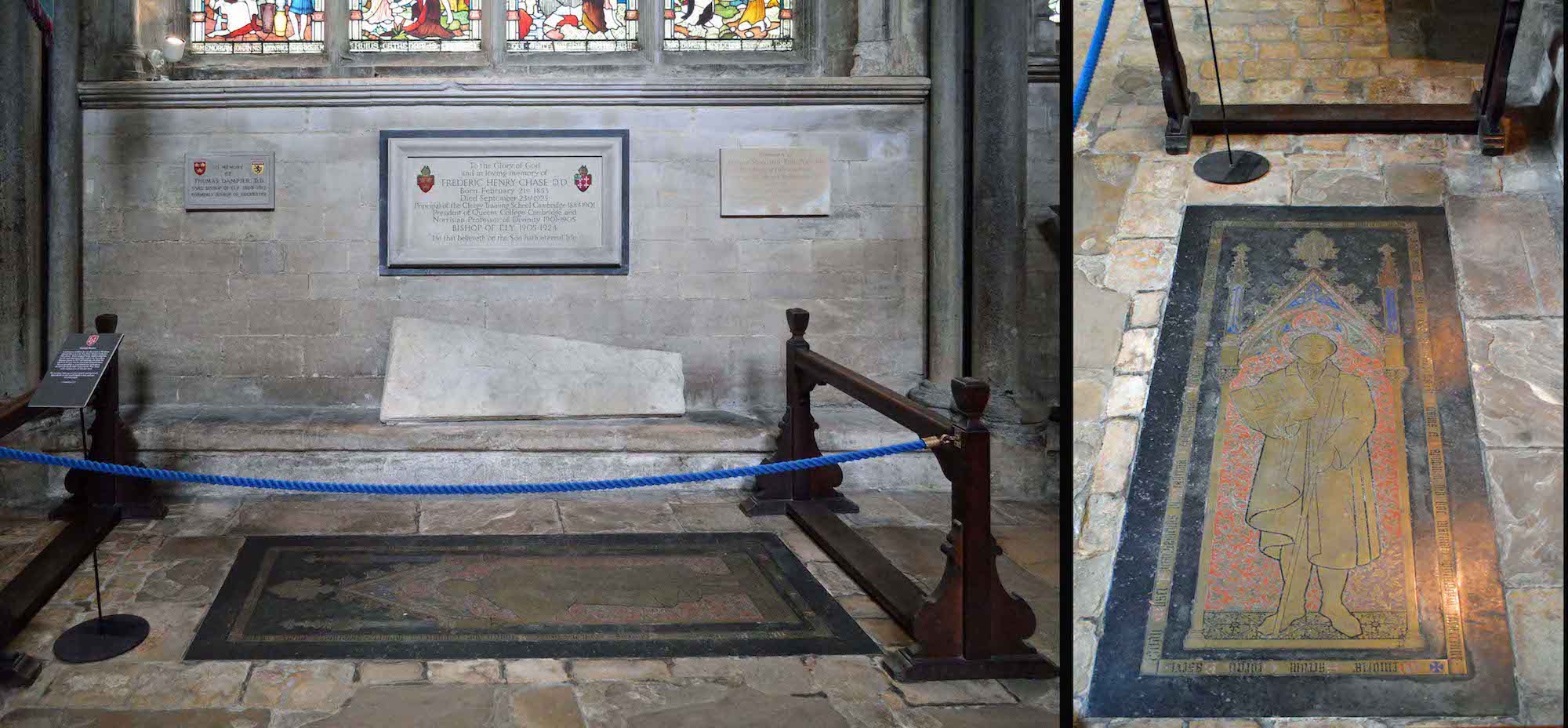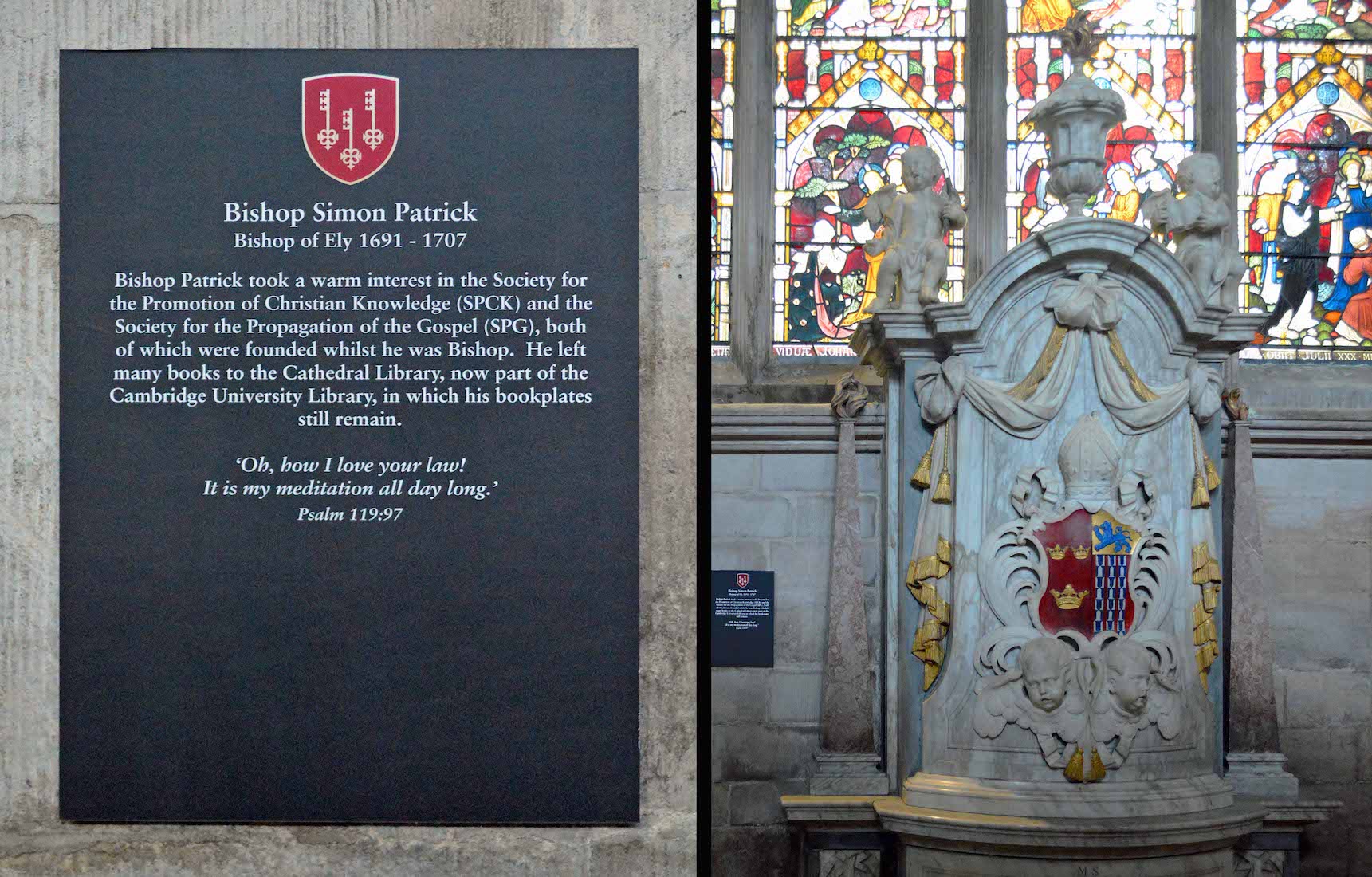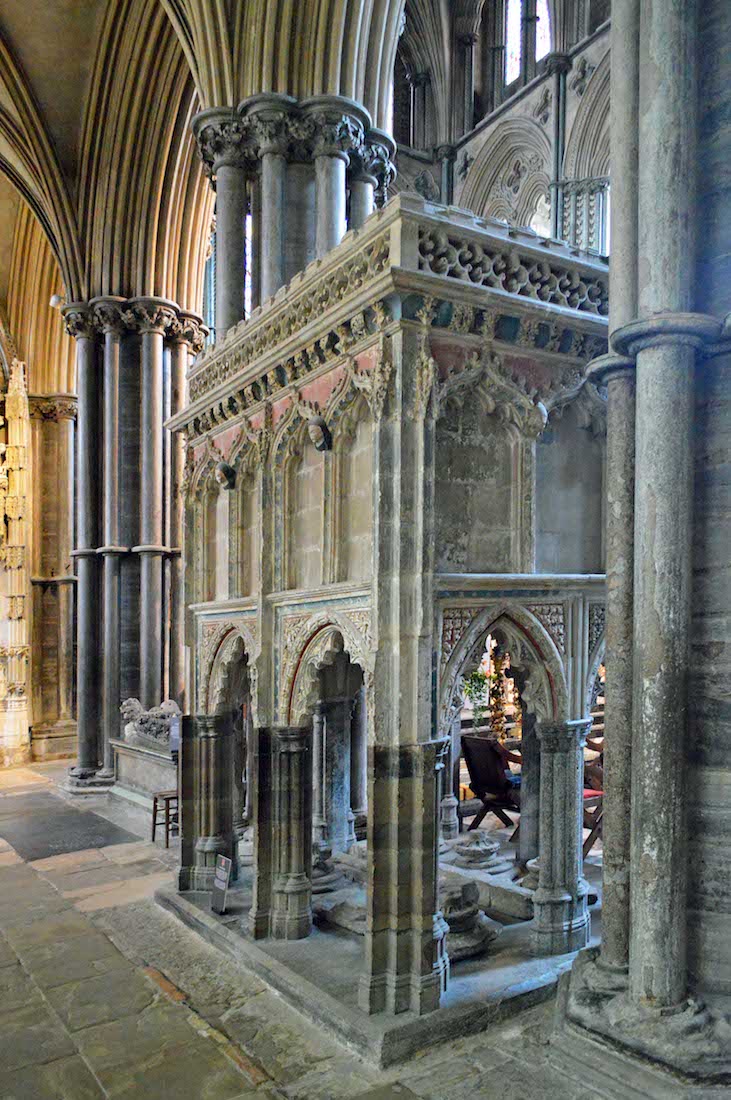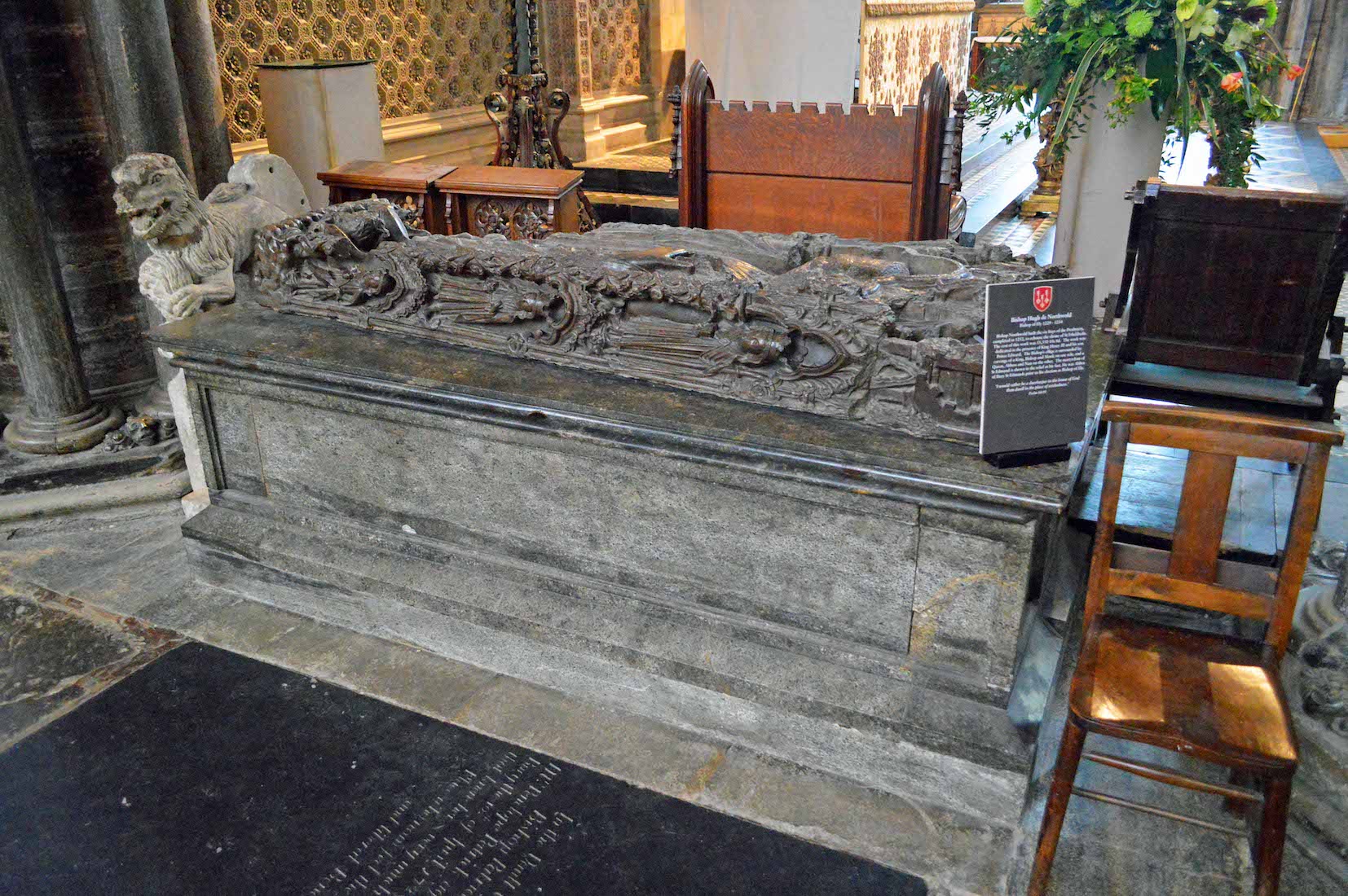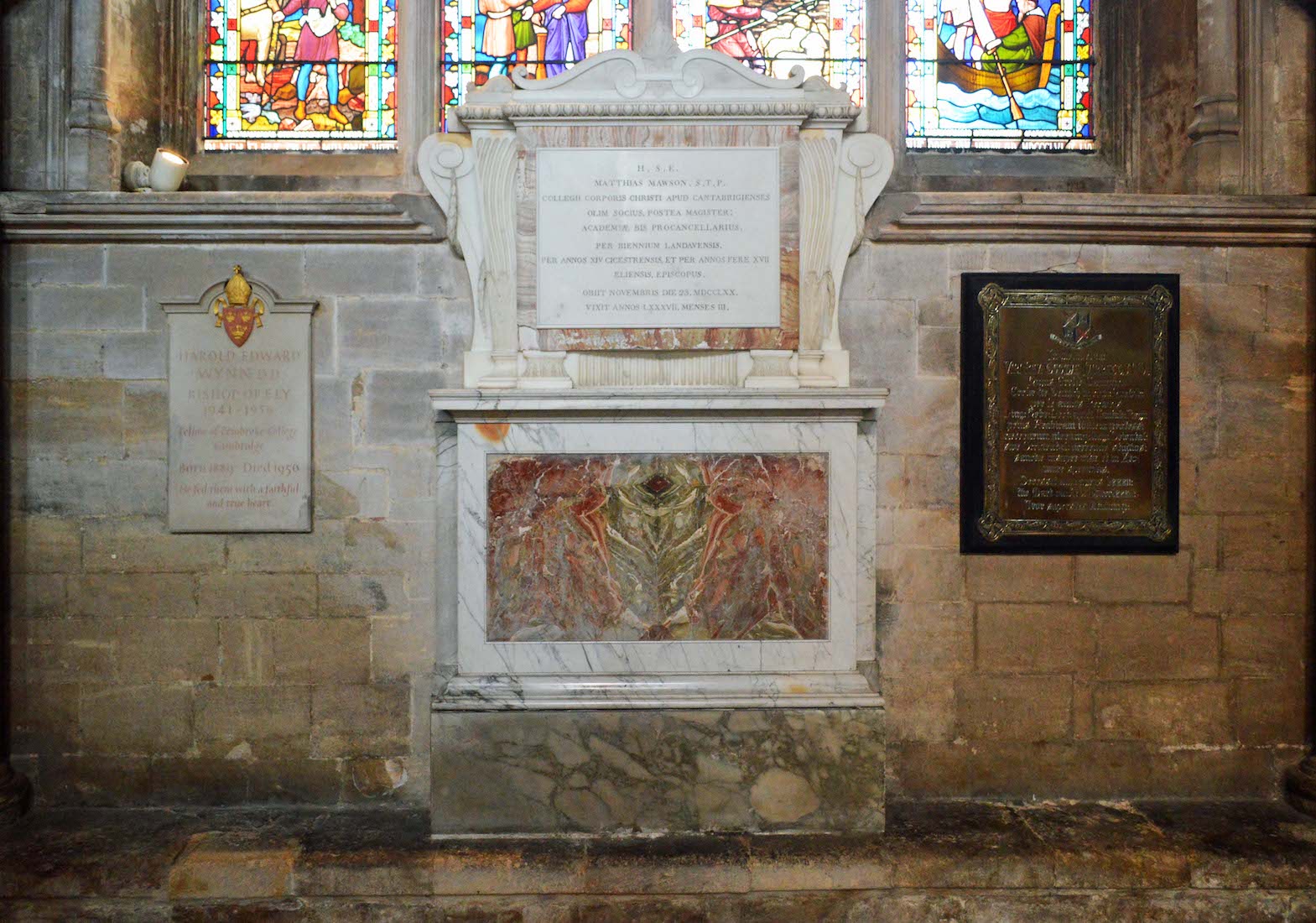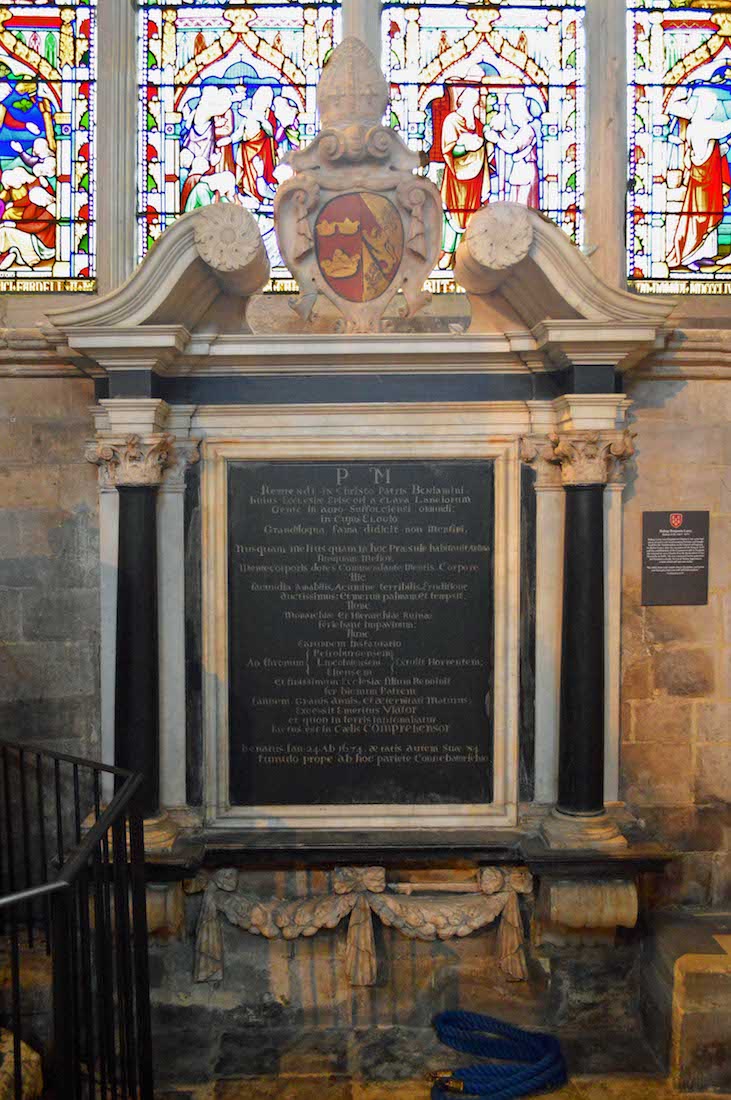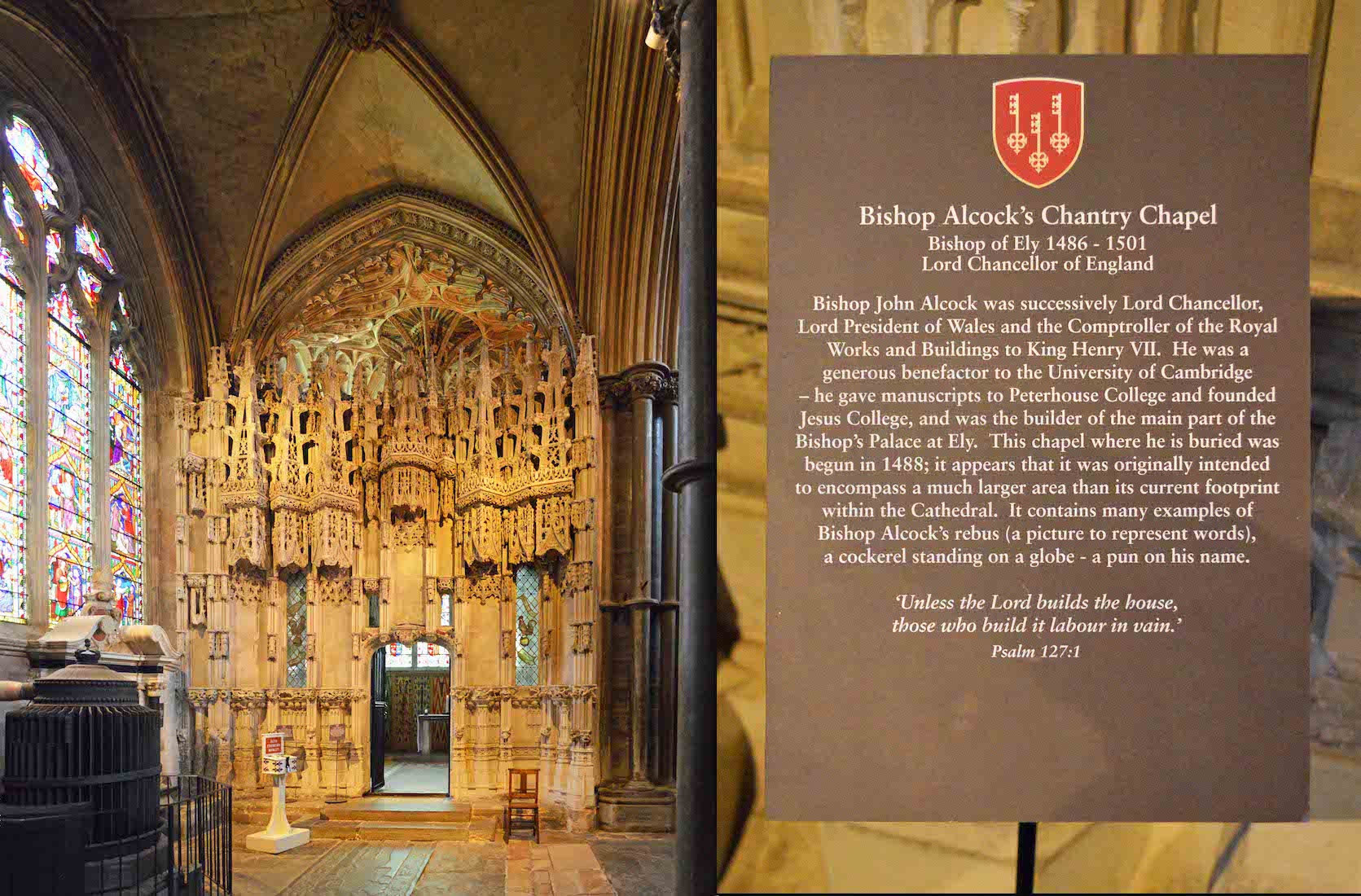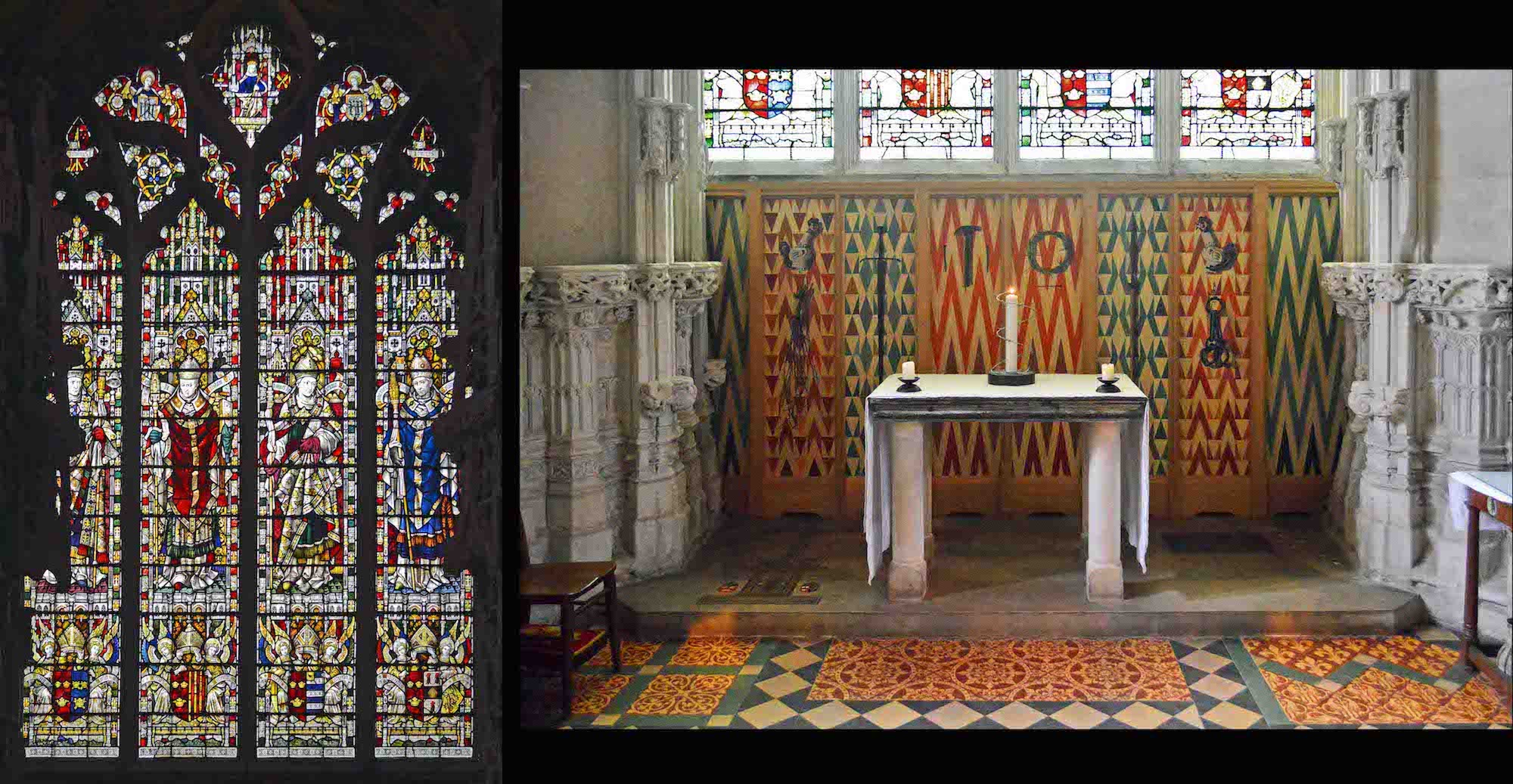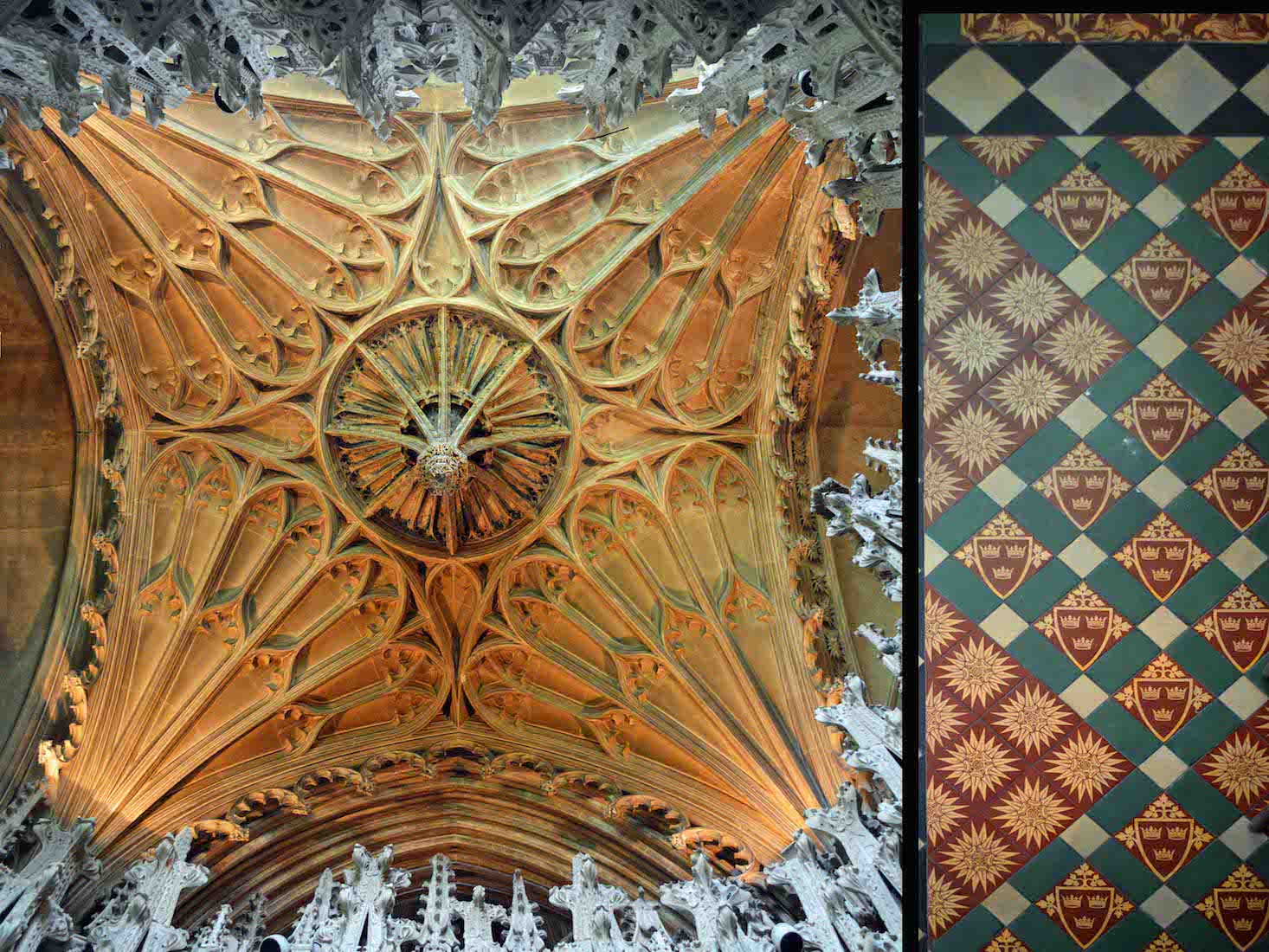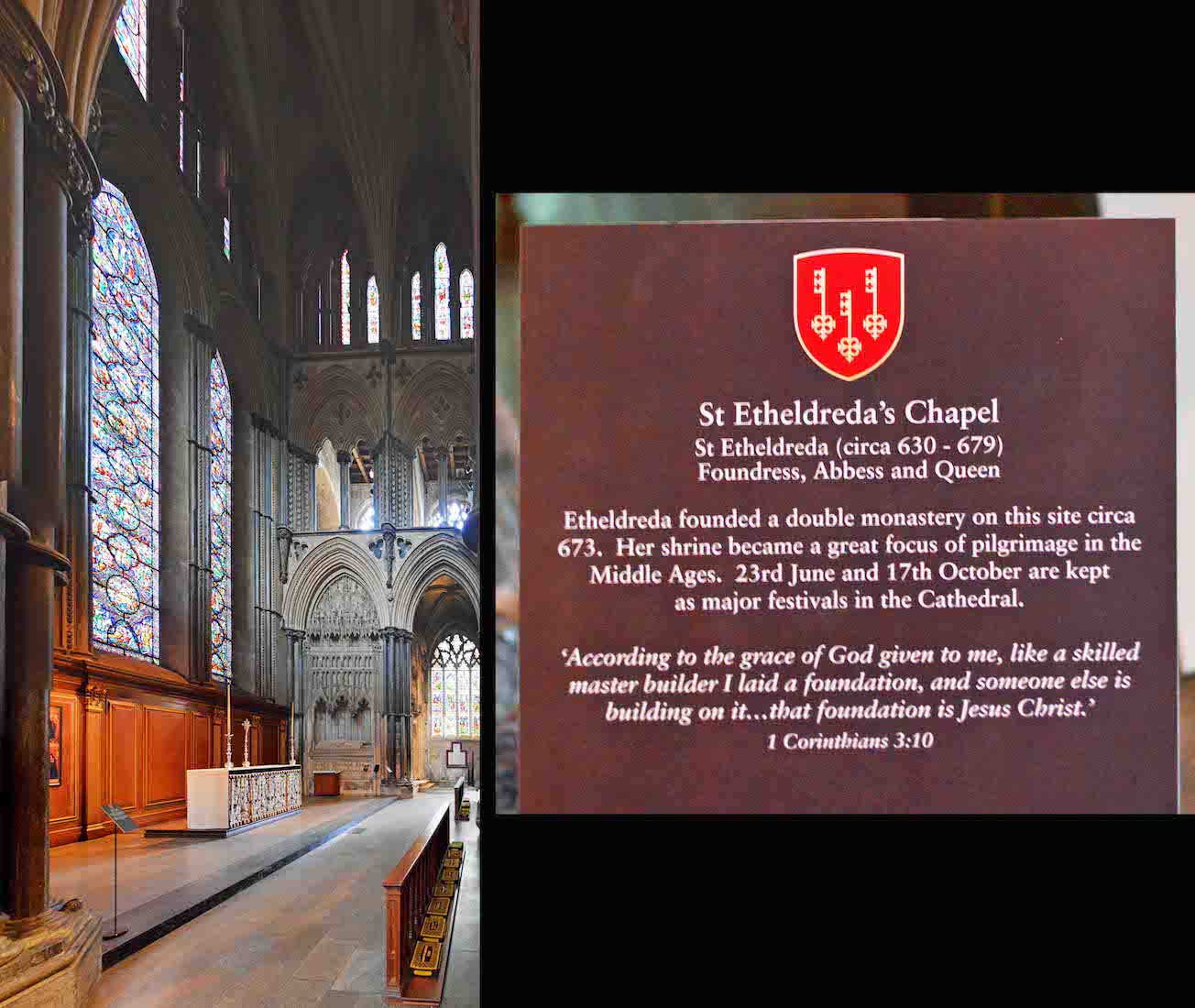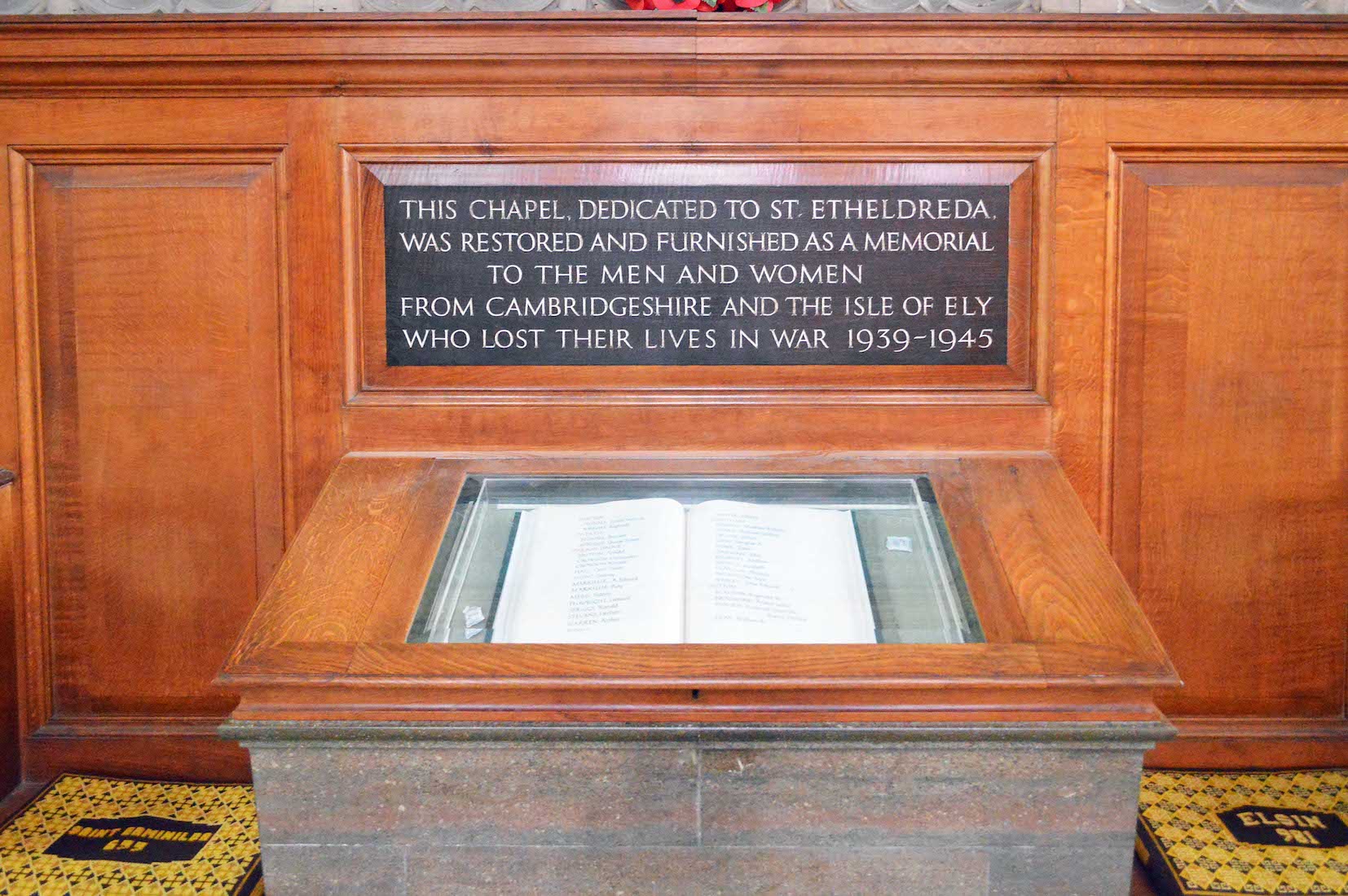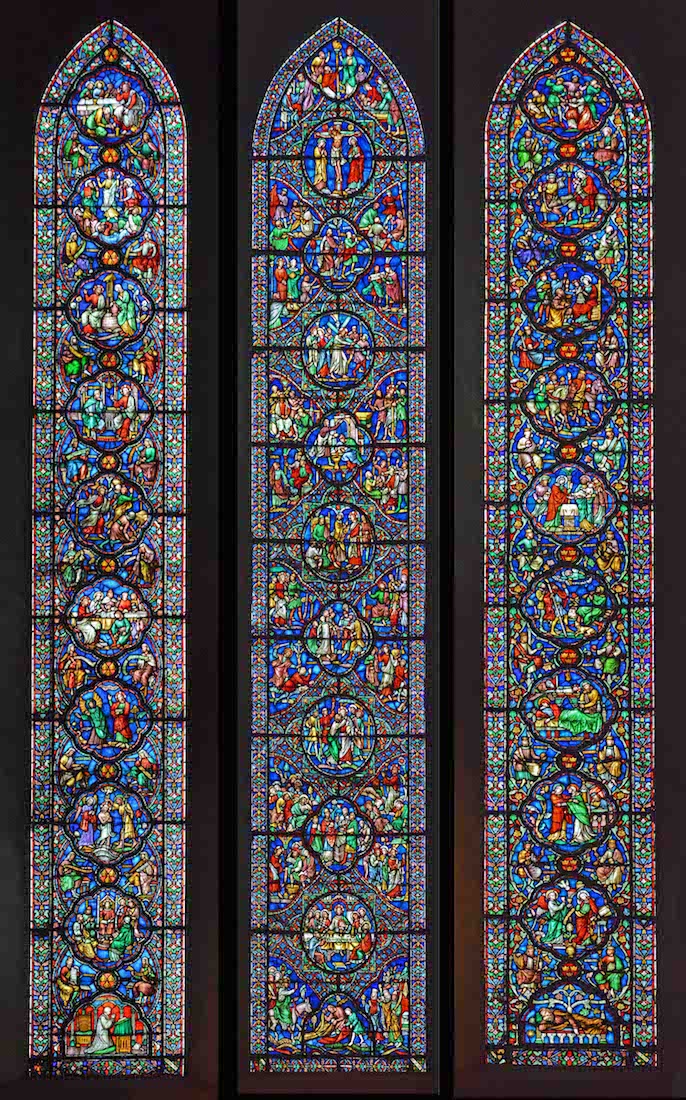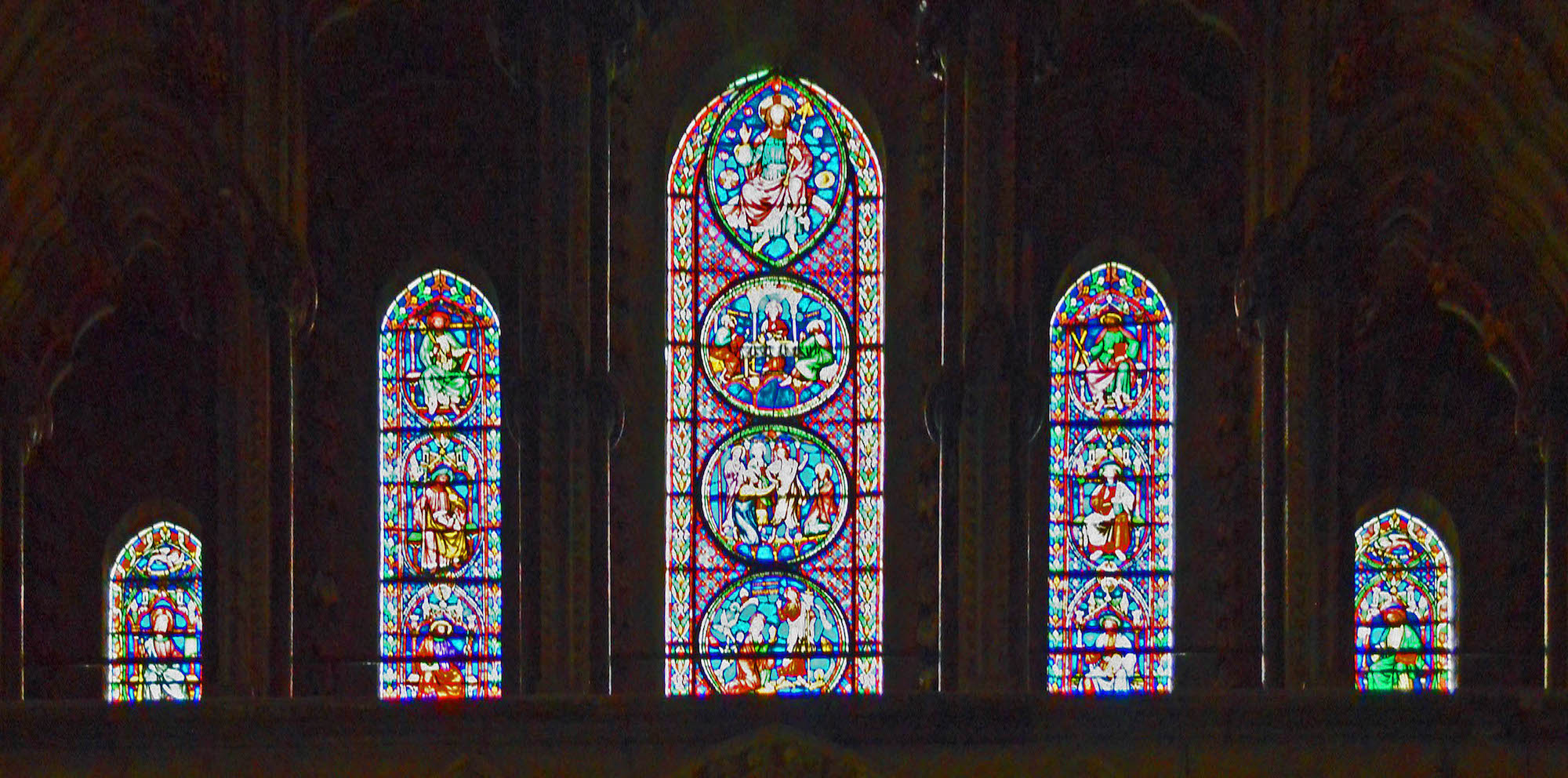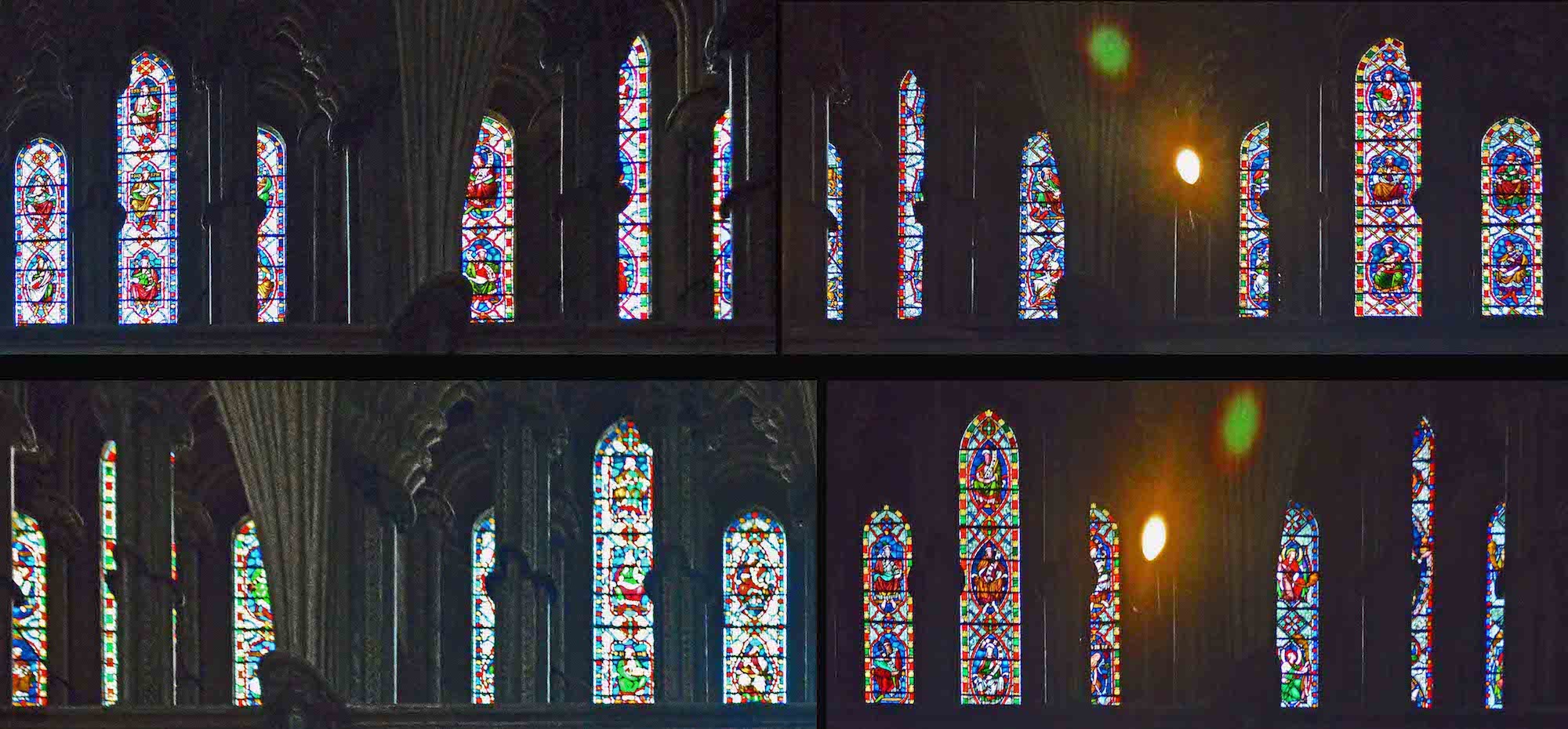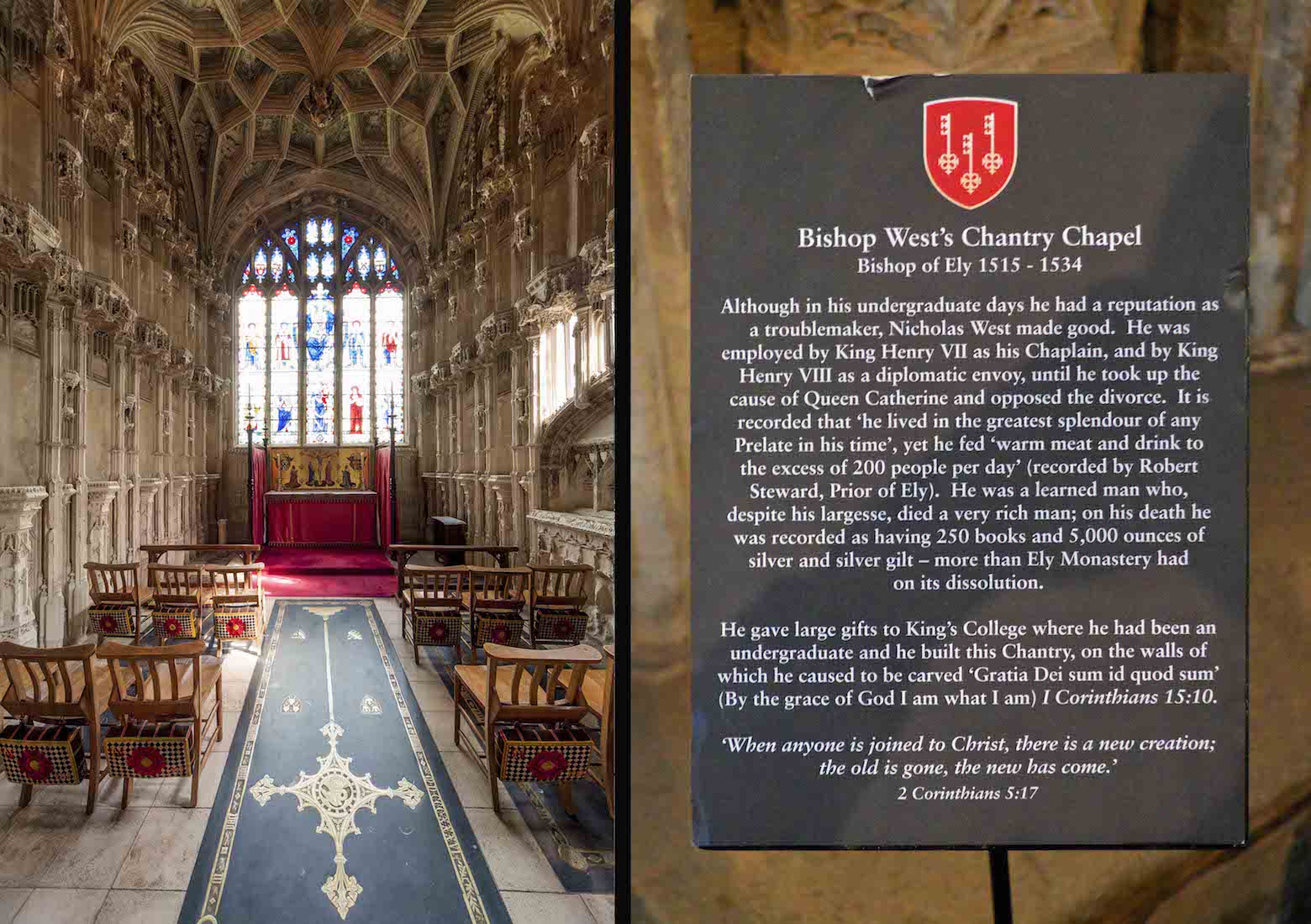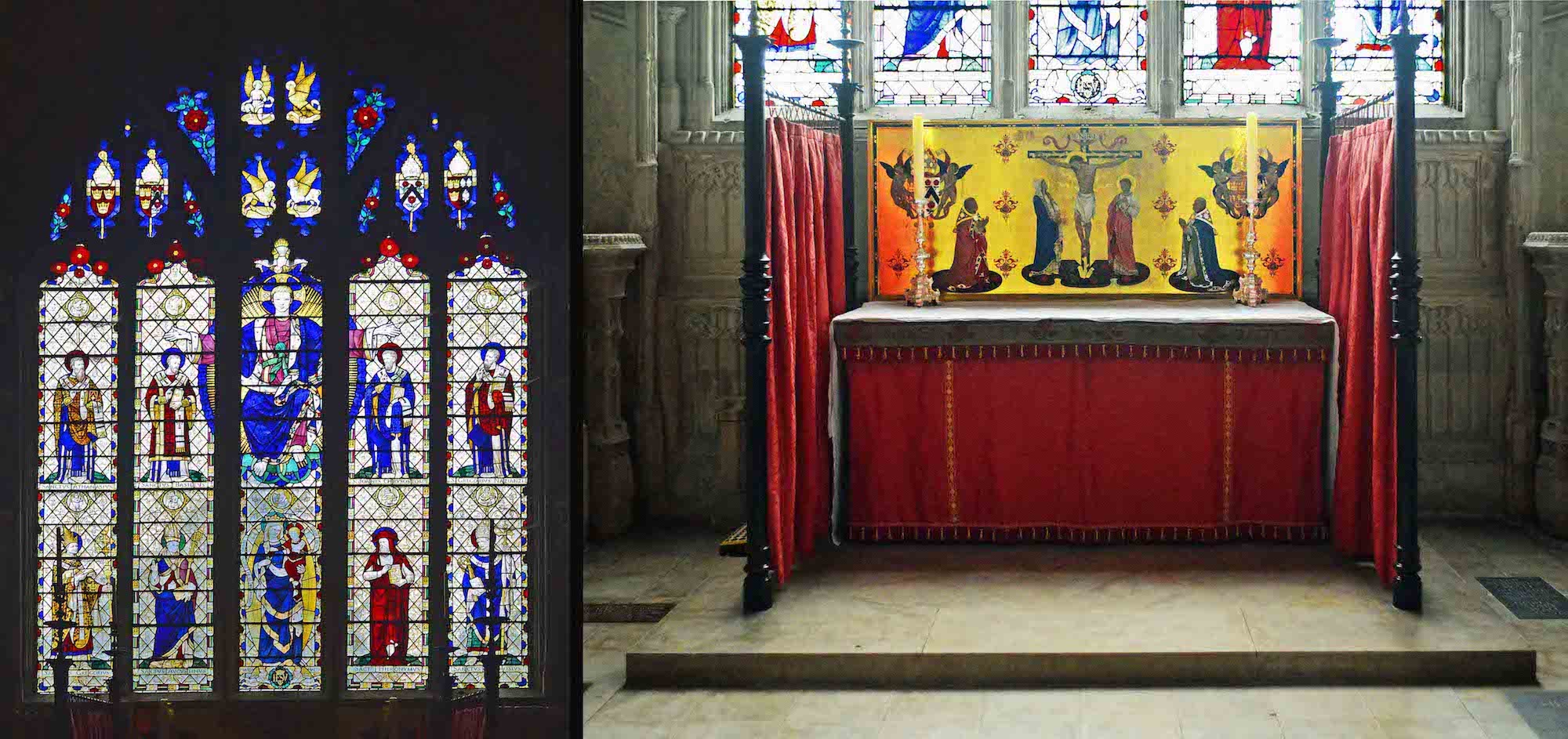
These are the remaining four windows of the North choir aisle. The left two illustrate the miracles of Jesus; the right two, parables. Window #3: Wheat and Tares; Vineyard; Lost Sheep; Fishing Net of Heaven. Window #4: Wise and Foolish Virgins; Six Acts of Kindness. PLAN
102. TOMB OF BISHOP WILLIAM DE KILKENNY
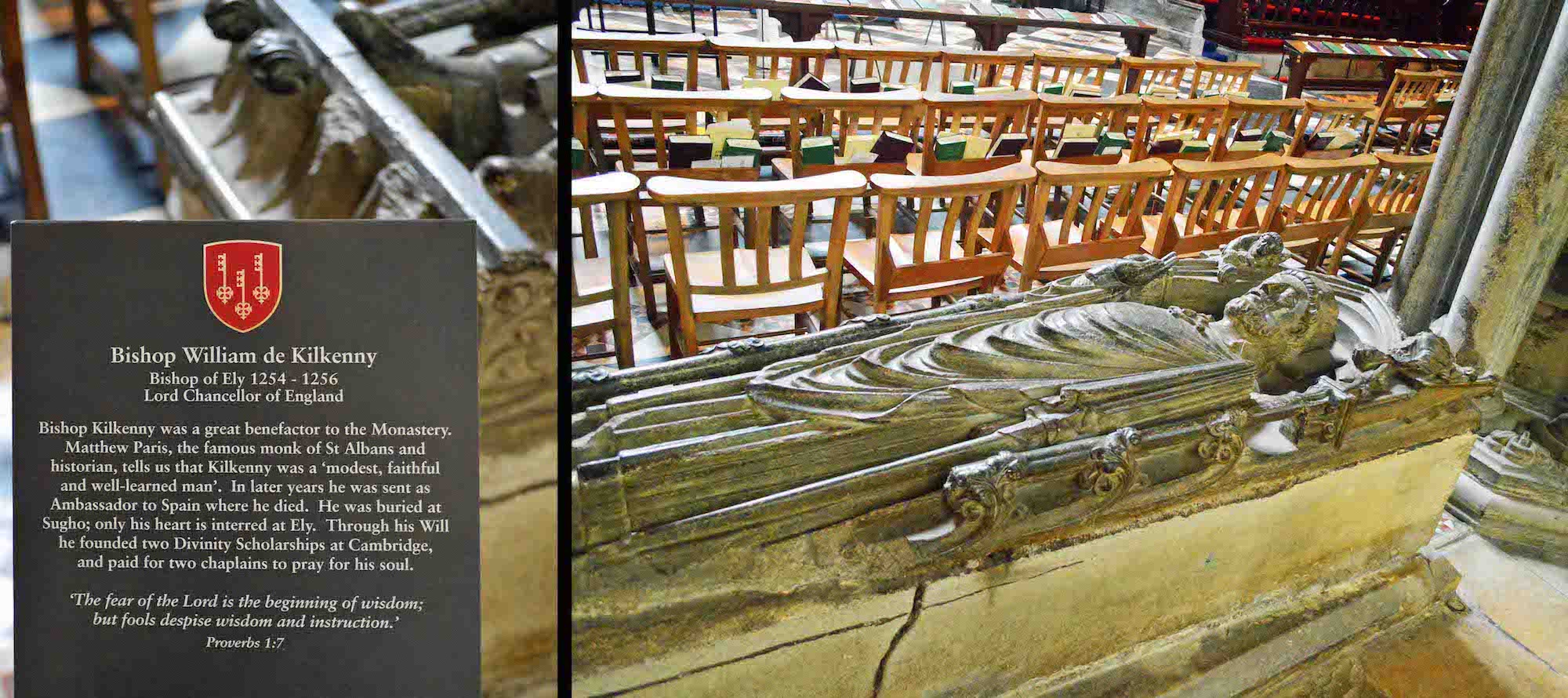
This monument, made of Purbeck marble, has his effigy on a tomb shaped slab with columns on either side and angels in the spandrels. Bishop William de Kilkenny was said to be a ‘modest, faithful, and well learned man’. Between 1250 to 1255 he was keeper of the great seal, and acted as Chancellor in 1253. He was made bishop of Ely in 1255. However in 1256 he was sent to Spain on a diplomatic mission for Henry III, where he became ill and died at Sugho, where he was buried, and his heart was returned to Ely.
3. 103. RESTING PLACE OF FREDERICK HENRY CHASE
Frederic Henry Chase (1853 – 1925) was a British academic and Bishop of Ely. Chase was educated at King's College School, London and Christ's College, Cambridge, graduating in classics. He was ordained deacon in 1876 and priest in 1877. He was a lecturer in divinity at Pembroke College, Cambridge, and at Christ's College, and Principal of the Clergy Training School at Westcott House, Cambridge. In late 1901 Chase was elected President of Queens' College, Cambridge and in 1902 he was also elected Norris Professor of Divinity. Three years later, in 1905, he was consecrated as Bishop of Ely. He resigned as bishop in 1924 and died in 1925.
104. BISHOP PATRICK MEMORIAL
This colourful memorial is for Simon Patrick (1626 – 1707), English theologian and bishop. He entered Queens’ College, Cambridge, in 1644, and after taking orders in 1651 became chaplain to Sir Walter St. John and then vicar of Battersea, Surrey. In 1662 he became rector of St. Paul's, Covent Garden, London, where he continued to labor during the plague. He was appointed Dean of Peterborough in 1679, and Bishop of Chichester in 1689, and worked to settle the affairs of the Church in Ireland. In 1691 he was translated to the see of Ely, which he held until his death on 31 May 1707. He was buried in Ely Cathedral.
105. TOMB AND CANOPY
This stone canopy once stood over the tomb of Bishop Hotham within the choir. His tomb now stands in the South choir aisle. For many years this canopy was mistaken for part of the Shrine of St Etheldreda. The fragments of stone beneath may have belonged to Etheldreda’s shrine which was destroyed at the Dissolution of the Monasteries in the reign of Henry VIII. A slate slab in the presbytery marks where her shrine stood.
106. BISHOP HUGH DE NORTHWOLD TOMB
Hugh de Northwold (died 1254) was Bishop of Ely from 1229 – 1254, during which time he was responsible for the building of the six Presbytery bays to house the shrine of St Etheldreda, the founder of the first monastery at Ely. His earlier election as abbot of Bury St Edmonds in 1213 was opposed by King John I and not approved until 1215. In 1235 he escorted the twelve year old Eleanor of Provence to England from Tarascon to Canterbury for her marriage to Henry III.
107. MATTHIAS MAWSON MEMORIAL
Matthias Mawson lived from 1683 to 1770. He was an English churchman and academic, who served as Master of Corpus Christi College, Cambridge and then as Bishop of Llandaff, Bishop of Chichester, and Bishop of Ely. He is buried in Ely Cathedral. At left is a plaque for Harold Edward Wynyard, Bishop of Ely 1941 – 1956.
108. BISHOP BENJAMIN LANY MEMORIAL
Born in Ipswich, Lany was a student at Christ's College, Cambridge. He became a Fellow of Pembroke Hall, Cambridge in 1616, and was Master of Pembroke from 1630. He was Vice-Chancellor of the University of Cambridge in 1632. During the First English Civil War Lany was deprived of his position. He went into exile with the future Charles II of England. After the Restoration of 1660, he was Bishop of Peterborough in 1660, Bishop of Lincoln in 1663, and Bishop of Ely from 1667. He is buried in Ely Cathedral.
109. BISHOP ALCOCK’S CHANTRY CHAPEL
After the rather gloomy line up of tombs and memorials in the North choir aisle, it is a pleasure to come to the bright and ornate façade of Bishop John Alcock’s Chantry Chapel. The statue niches with their architectural canopies are crammed so chaotically together that some of the statues were never finished as they were so far out of sight. Others, although completed, were overlooked by the destructions of the Reformation, and survived when all the others were destroyed.
110. INSIDE THE CHAPEL
The chapel window shows St Etheldreda and four bishops. St Etheldreda is near the apex holding a model of the Cathedral; Bishop Alcock is at the right hand side. A simple altar with an Amnesty candle sits below. • John Alcock was born c. 1430, and achieved high office in both church and state. Amongst his many duties and posts, he was given charge of the sons of Edward IV, who became known as the Princes in the Tower. That Alcock faithfully served Edward IV and his sons as well as Henry VII adds to the mystery of how their fate was kept secret.
111. CHAPEL CEILING
The chapel ceiling is wonderfully ornate, and the floor tiling is of great interest too. • ... Appointed bishop of Rochester and then Worcester by Edward IV, Alcock was also declared ‘Lord President of Wales’ in 1476. On Henry VII’s victory over Richard III in 1485, Alcock became interim Lord Chancellor and in 1486 was appointed Bishop of Ely. The resources Ely put at his disposal allowed him to found Jesus College, Cambridge and build his own fabulous chantry chapel in an ornate style. On his death in 1500 he was buried within his chapel.
112. ST ETHELDREDA’S CHAPEL
Leaving Bishop Alcock’s Chantry Chapel we move across to the wide but shallow chapel of St Etheldreda – the centrepiece of the presbytery. St Etheldreda lived from c. 630 – 679, and founded a double monastery on this site in c. 673. Her shrine became a great focus for pilgrimage in the Middle Ages. 23rd June and 17th October are kept as major festivals in the Cathedral.
113. CHAPEL MEMORIAL BOOK
Within the Etheldreda Chapel is this memorial book. On the plaque is an inscription to the effect that the Chapel was restored and furnished as a memorial to the men and women of Cambridgeshire and the Isle of Ely who lost their lives in War 1939 – 1945.
114. CHAPEL ALTAR
In the centre of the Chapel stands a simple altar with crucifix and two candles, and a cloth of elaborate design.
115. EAST WINDOW
The East window can be entitled ‘The Life of Christ’. The three main lancets are very detailed in their design. Each lancet contains ten main scenes from the life of Christ. The Crucifixion is pictured near the top at centre. The window was made in 1857 by William Wailes. The window was donated by Bishop Sparke: he appears in the bottom left hand corner! It is an amazing window ... .
116. HIGH EAST WINDOWS
Five smaller higher panes complete the display. The central window has scenes of Christ after his Resurrection. The four remaining windows picture the twelve disciples, with Matthias replacing Judas Iscariot, as recorded in Acts.
117. PRESBYTERY CLERESTORY WINDOWS
The clerestory windows line both sides of the presbytery and are hard to photograph! The Northerly windows are on top, the Southerly windows below. The windows are filled with the ancestors of Jesus, beginning with God and Adam in the Southwest corner (bottom right), and continuing around the presbytery and ending with the Virgin and Child in the Northwest corner (top left).
118. BISHOP WEST’S CHANTRY CHAPEL
This chapel was completed in 1534. The floor of the Chapel is a memorial stone under which Bishop West is buried. The Chapel also has an elaborate Renaissance ceiling and wonderful carving. • Nicholas West became Bishop of Ely in 1515. Although he lived in great style, employing over 100 servants, it is said that he provided cooked food for over 200 poor people every day. [Chantry: Cathedral Photo]
119. CHAPEL WINDOW AND ALTAR
The window depicts Christ with the doctors of the Church: St Athanasius, St Basil, St Gregory, St Augustine, St Chrysostom, St Gregory Nazianzas, St Hieronymous, and St Ambrose. There is also a picture of Madonna and Child. The so called ’doctors’ were people of special importance in the early church. The altar screen has a depiction of the Crucifixion with two bishops also kneeling at the sides.
120. PARABLES WINDOW
Leaving the Chantry we have immediately before us on the South wall this window and memorial. The window illustrates three of the parables: the Vineyard; the Talents; the Wheat and the Tares. The memorial is hard to read, but looks as though it might remember Margarita E Lockhard who died in 1802?


